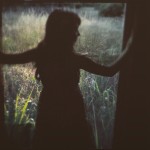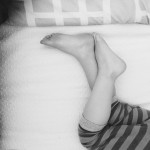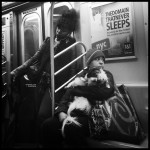Class Review. (Click to see all of the School House lessons)
Well class we have reached the end of the elements of design. I know at times they seem rote but they are integral to solid composition. Last time we finished talking about texture and what it lends to our photos. Here are some examples from our #juxtschoolhouse tag.
 Photo by @senor_p
Photo by @senor_p
I adore the vivid peeling colors against the rusty padlock in the above photo. I want to run my fingers across the rust stains. You really get the feeling of age and use with

Photo by David @painterdave
How fantastic is the bark intertwined with the fence? There is so much to love about this photo by @painterdave.
So this week we journey on through the elements to perspective.
Perspective in a photograph tells the eye about the depth of the scene. How the photographer uses the elements within the photo will either give the viewer some insight or will allow the depth and scale to remian a mystery. These markers help us decide what we are looking at and from what depth. Shooting with an iPhone to show depth can sometimes be tricky becuase of the lack of aperatures. In effect, it can flatten or distort the space between you and the background.

There are three basic points of view: birds eye, worms eye and at eye level. All of these views have to do with our horizon line and where we are in relation to it.
We have all seen the shots of sky scrapers where the angle is straight up the side of the building. This exaggerates an already steep rise. It gives the viewer a sense of smallness when gazing up at a tall building. This is worm’s eye view. This view encompasses anything below eye level or from an inferior position. It is up to the shooter how far beneath eye level they want to shoot. This view doesn’t always work and depends solely on the subject but it can make a more dynamic composition when done correctly. Don’t be afraid to get low to the ground and change your angle from time to time.
Bird’s eye view is anything above eye level and, and like worm’s eye view, the angle is left to the shooter to play with. Just because it is called bird’s eye view doesn’t mean you have to take ariel photos it just means get a little bit higher than normal.
Changing your perspective can bring new flavor to your work. Try it out see if a new perspective works for you.

There are a few different ways to clue your viewer in to how large the space is in your photos. One easy way is showing size. We learn at an early age that when something is further away it looks smaller. For instance, if you place two people in a hallway one at the end and one close to you the one farther away will seem smaller eventhough their size is similar.

The sharpness of an object’s edges can also denote depth. Subjects in the foreground will be sharper than subjects in the background. Another option is to overlap objects within your compostion. This will further exaggerate your depth. Placing something in the immediate foreground forces the eye to take it in before looking beyond to the rest of the space. You can also utilize texture to help with communicating depth. The texture closest to the lens will be the most pronounced while the texture as it goes back into the photo will lose detail.
That’s a wrap! We can put the Elements of Design to bed. Although, I’m pretty sure they will come back to visit from time to time.
Class dismissed!
About Author
Latest stories
 Featured ArticlesApril 13, 2015The Storytellers Vol. 4
Featured ArticlesApril 13, 2015The Storytellers Vol. 4 StoriesMarch 3, 2015Momdom
StoriesMarch 3, 2015Momdom Anna CoxFebruary 24, 2015Captain and the Kid
Anna CoxFebruary 24, 2015Captain and the Kid Anna CoxJanuary 19, 2015Honest Moments by Caleb Stumpfl
Anna CoxJanuary 19, 2015Honest Moments by Caleb Stumpfl

Just did a summer catch up on all your lessons Anna, thanks heaps teach, brilliant work and loved all the example shots that you included for each theme too !!